Abstract
1. The splenic artery flow, the splenic weight and the arterial blood pressure were recorded in cats anaesthetized with sodium pentobarbitone.
2. Oscillations in splenic artery flow and splenic weight were observed. Following occlusion and release of the splenic artery, there was a brief increase in flow to above the pre-occlusion level and the oscillations in flow were greatly increased in amplitude. It is suggested that the brief increase is a consequence of the reduction of arterial pressure and that the oscillations are due to synchronization of rhythmic activity of smooth muscle within the spleen.
3. Stimulation of the splenic nerves resulted in decreases in splenic artery flow and splenic weight. The size of the responses varied with the frequency of stimulation and maximum responses in both flow and weight were obtained at about 3 impulses/sec.
4. After stimulation for 10 min, the splenic weight response was maintained while the flow response showed some recovery towards the control level.
5. When the splenic artery flow was reduced to about half the control level for periods up to 2 hr, the flow and weight responses to stimulation of the splenic nerves remained unchanged; the significance of this after a haemorrhage is discussed.
6. Intravenous administration of atropine or propranolol did not affect the responses to nerve stimulation. After phenoxybenzamine, nerve stimulation caused a smaller decrease in splenic weight, while the splenic artery flow increased to above the control level. This increase was unaffected by atropine but abolished by propranolol.
Full text
PDF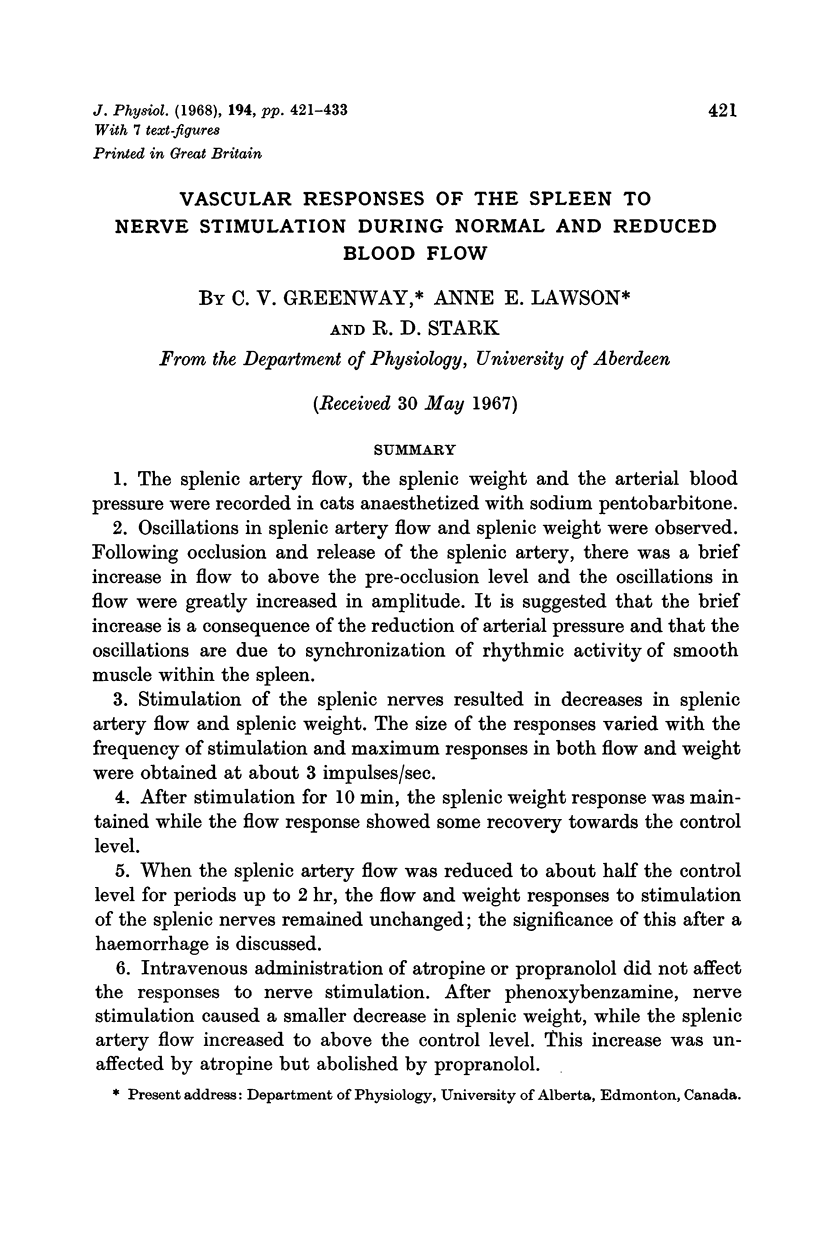
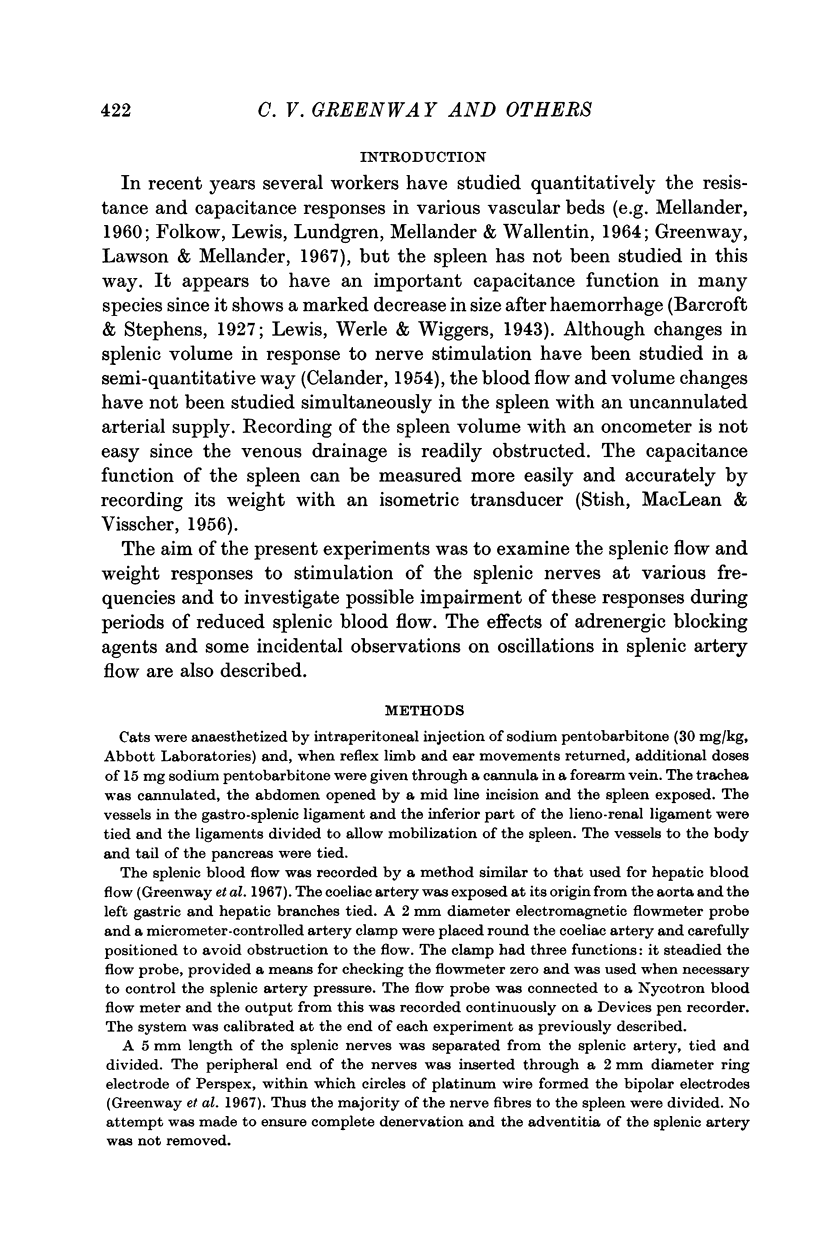
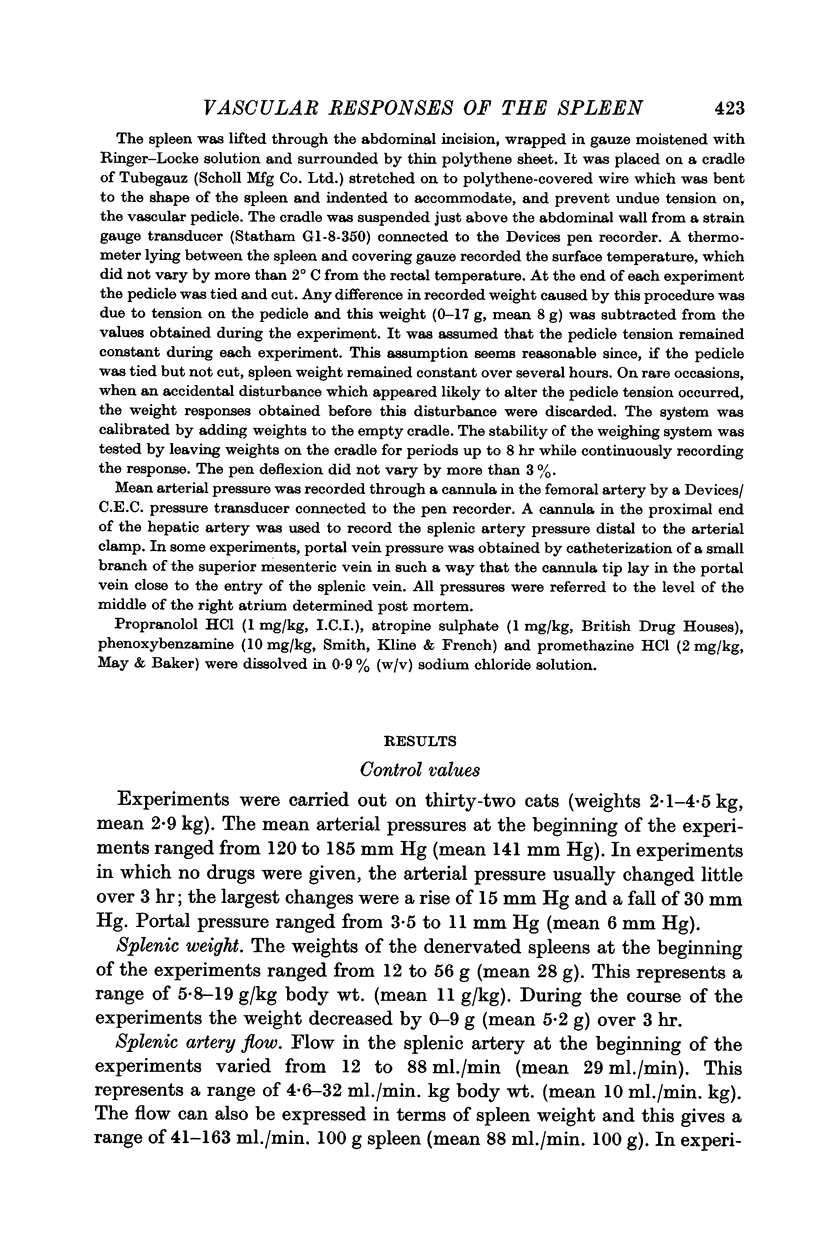
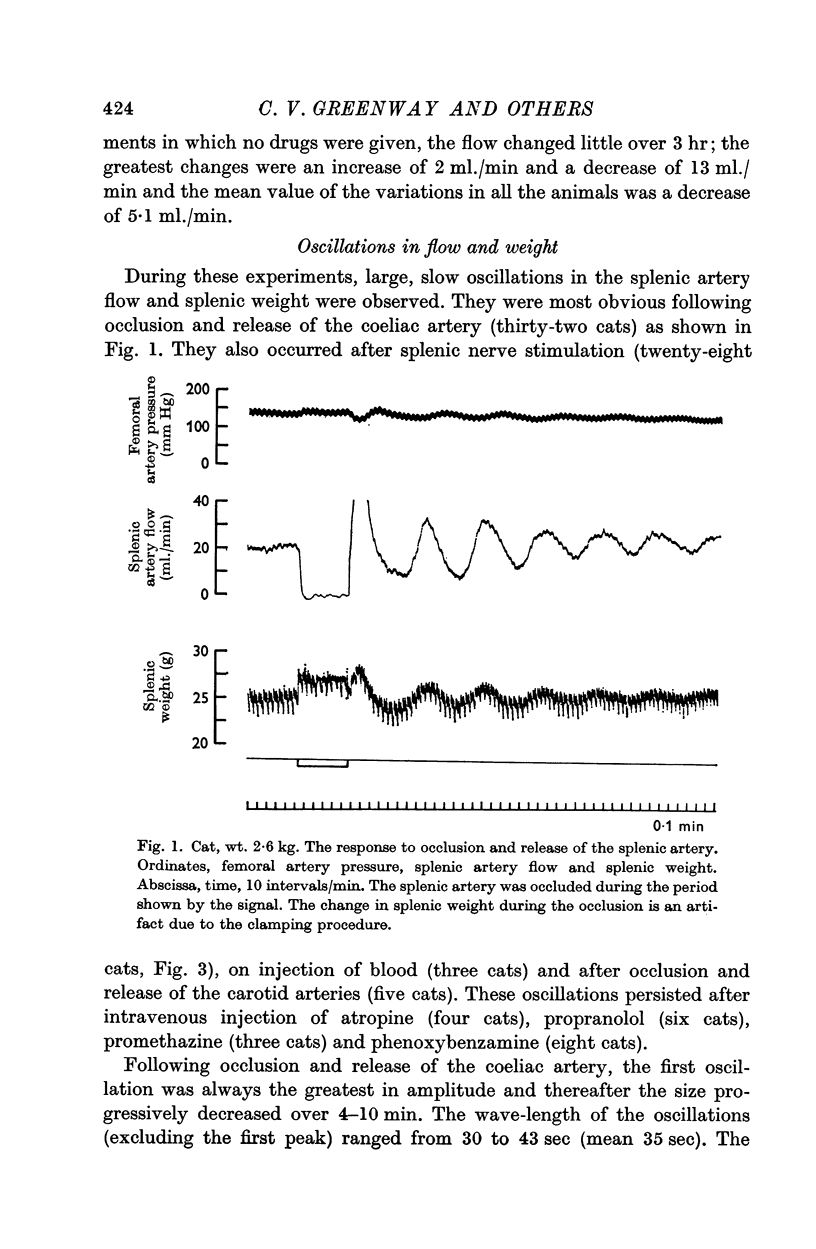
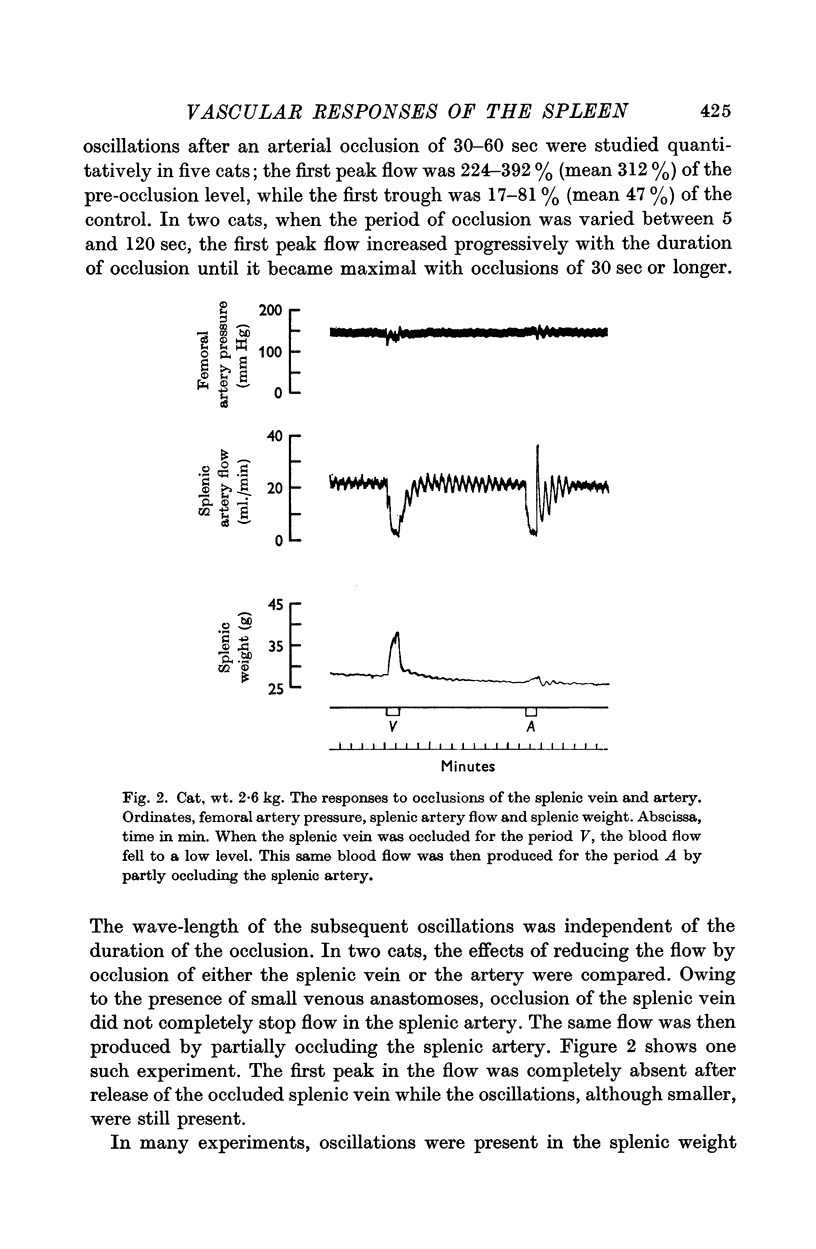
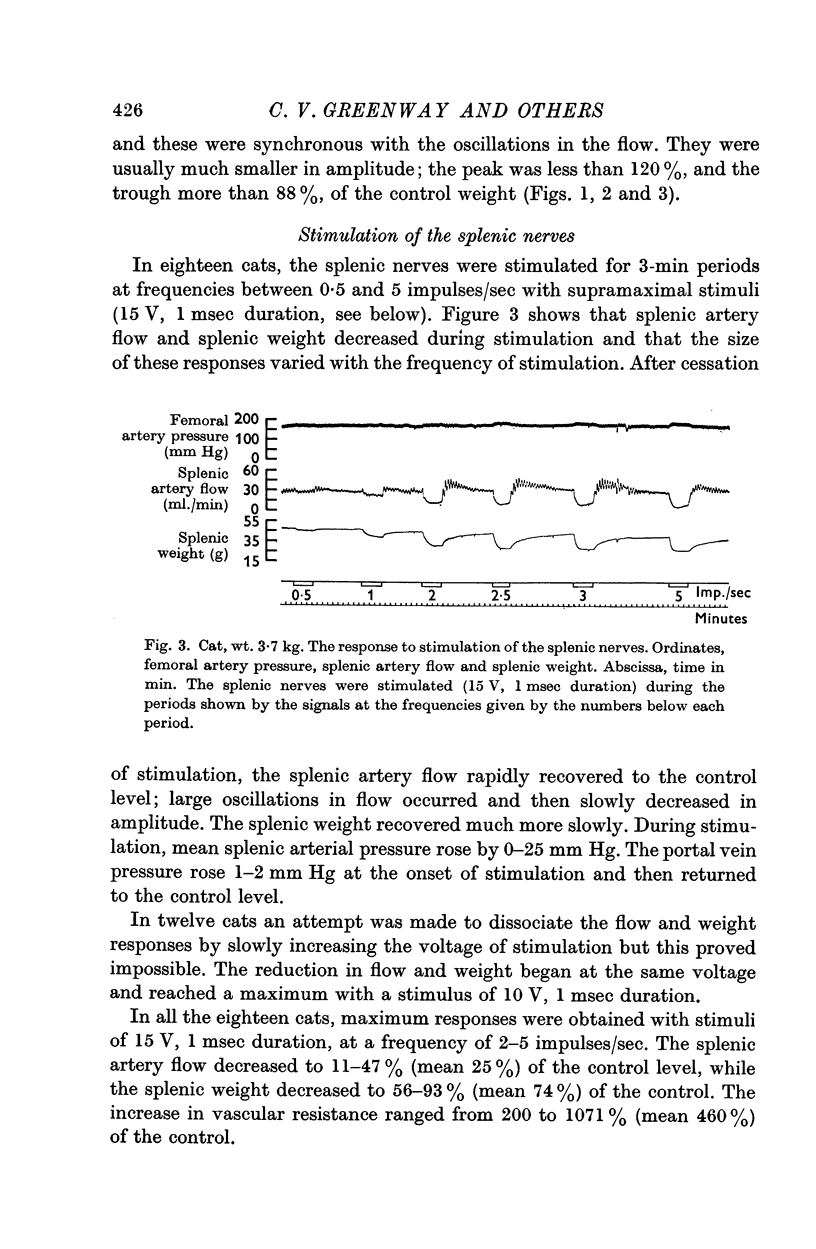
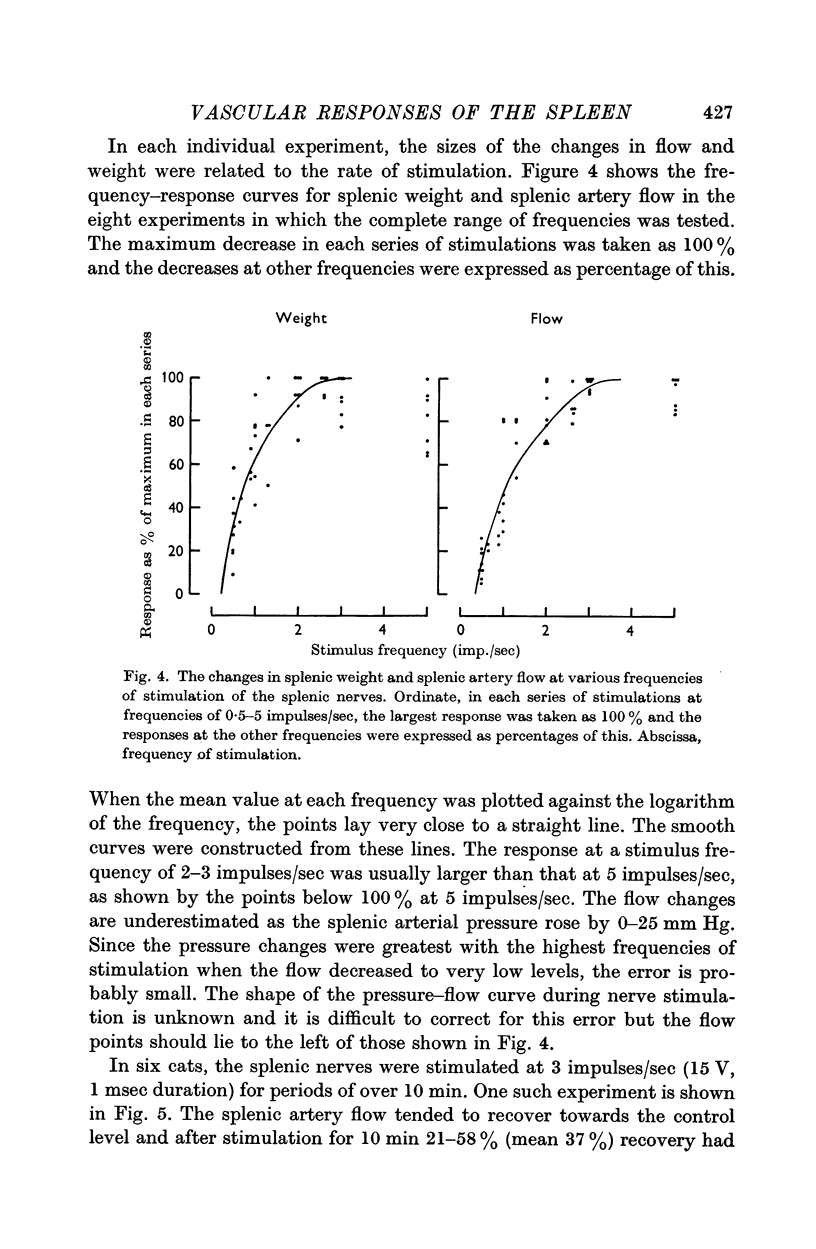
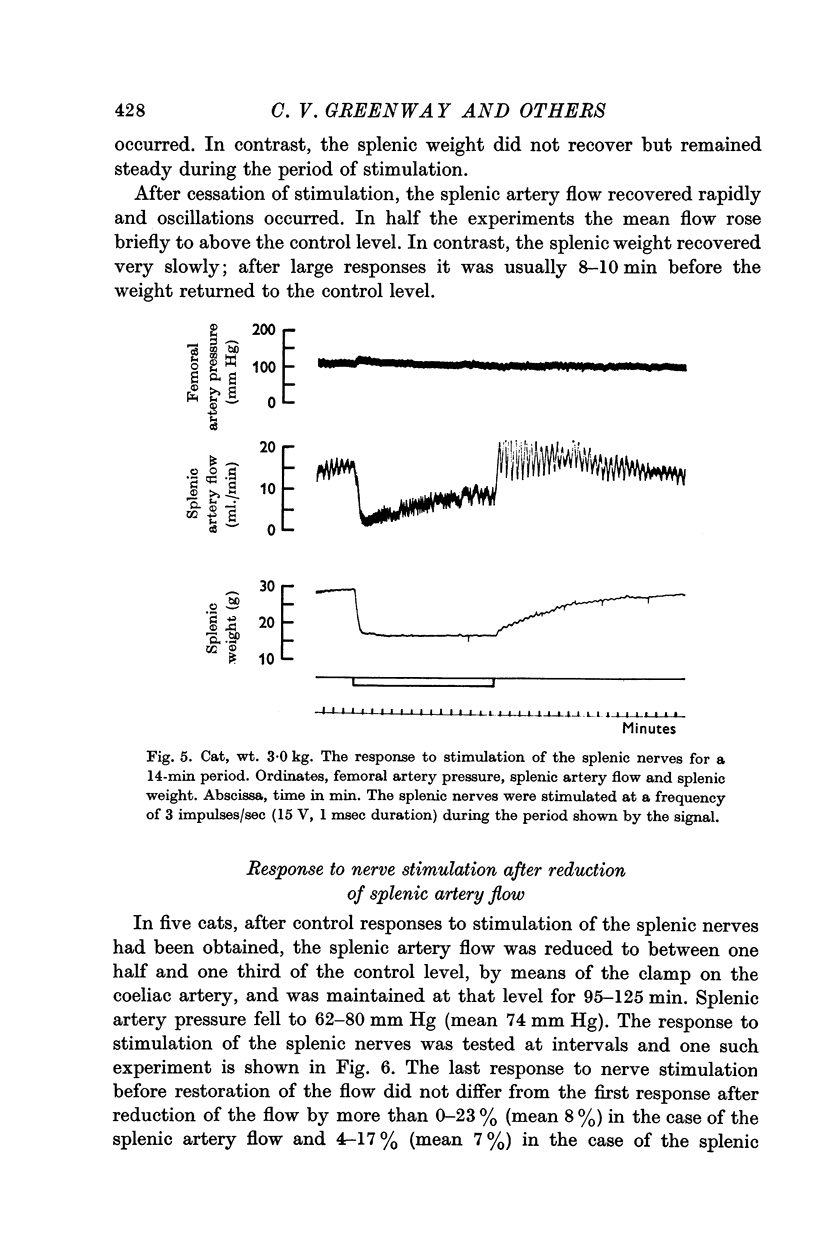
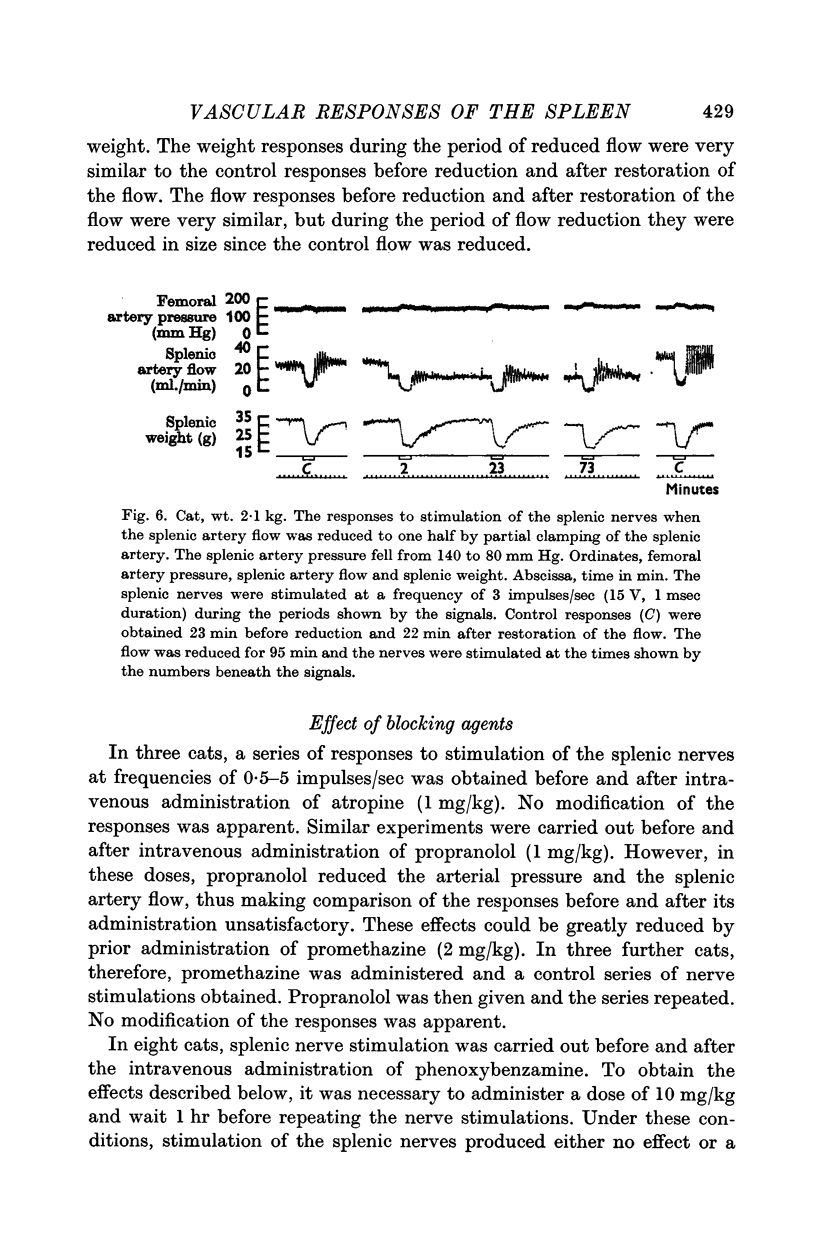
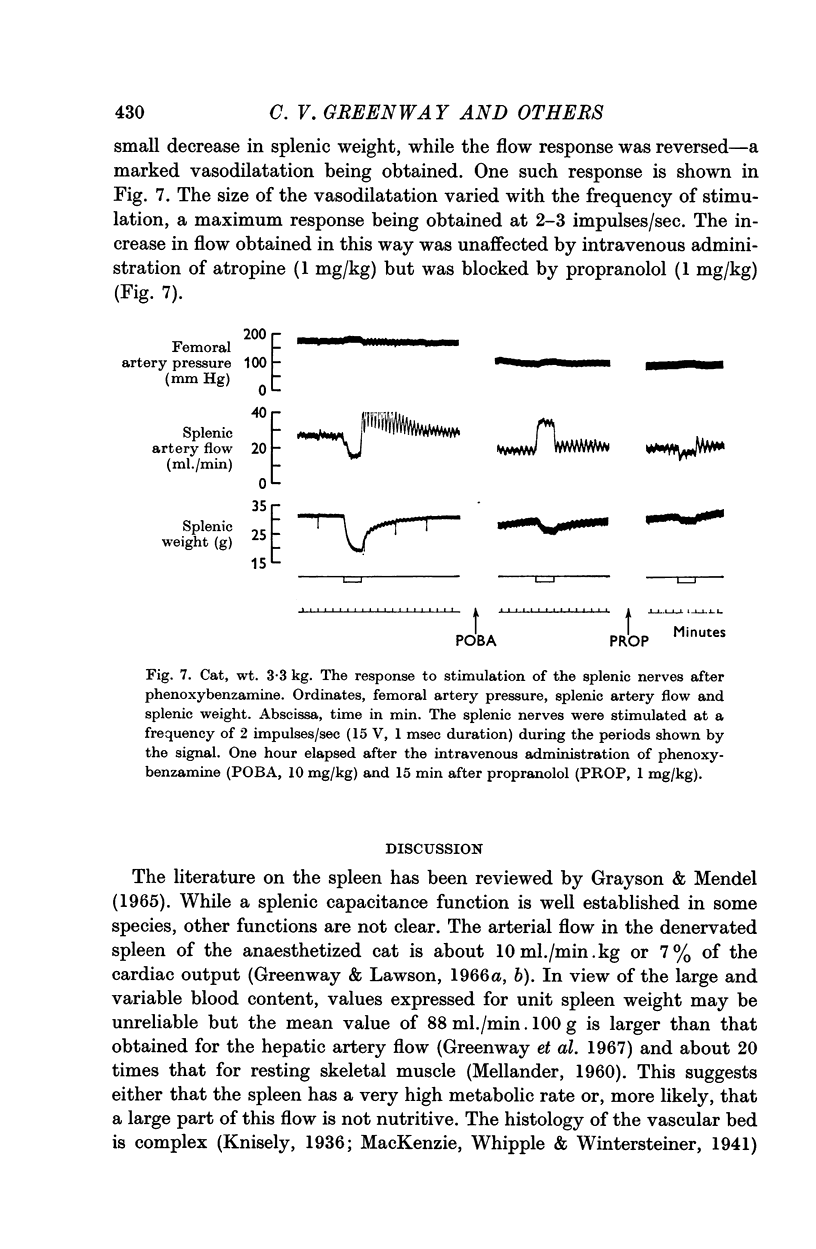
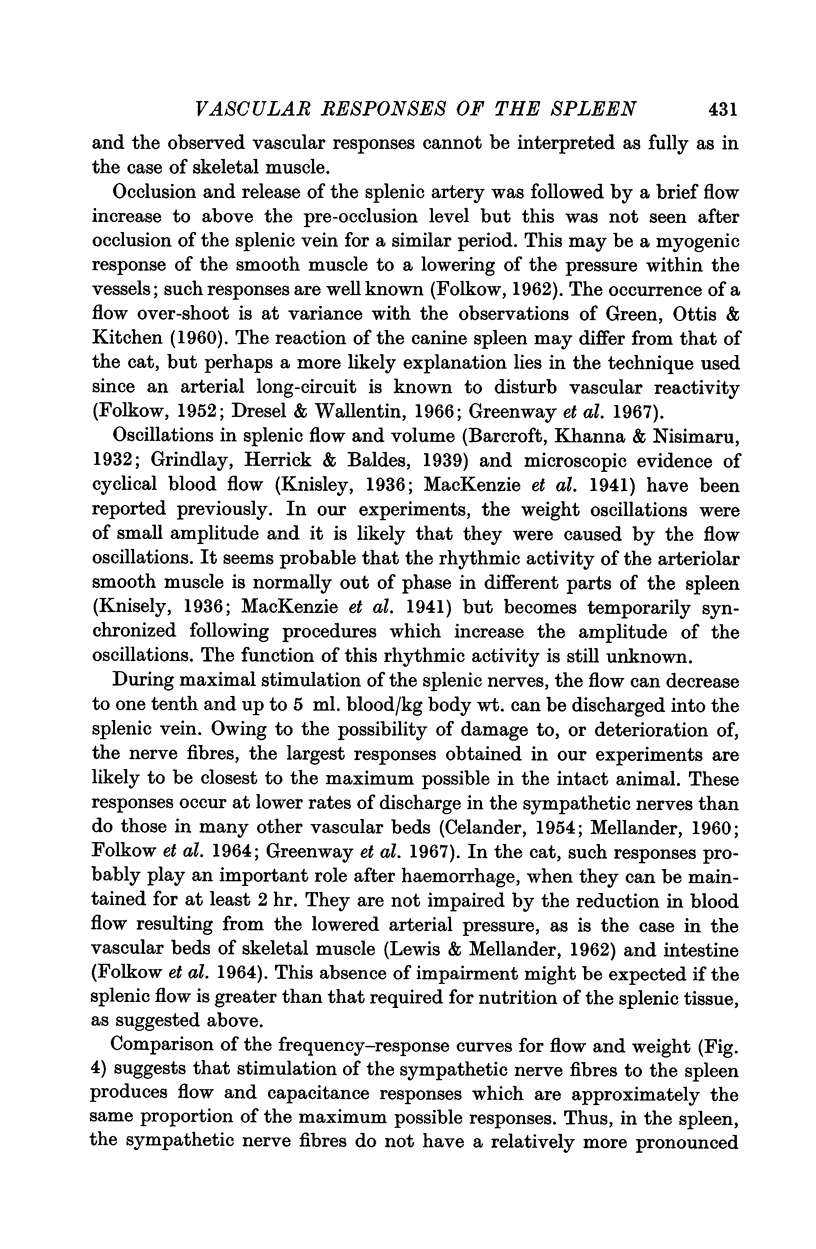
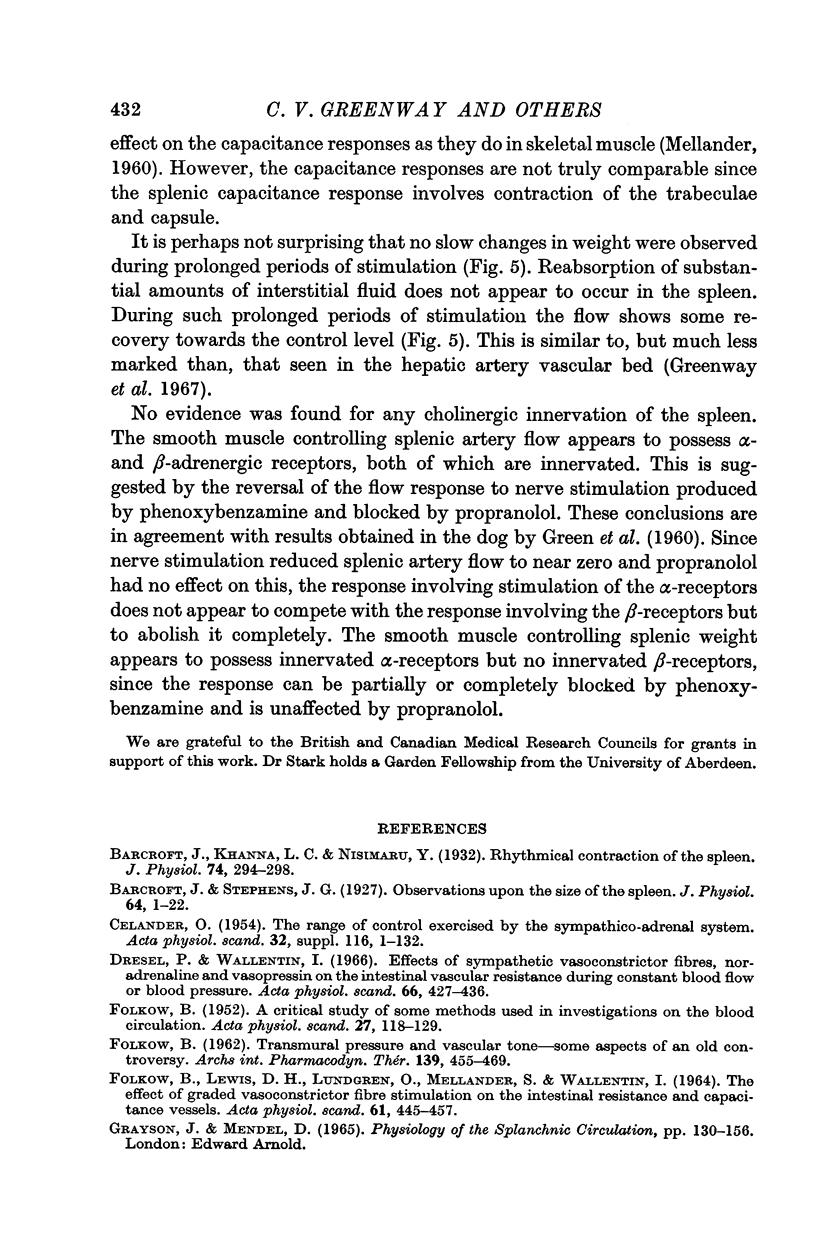
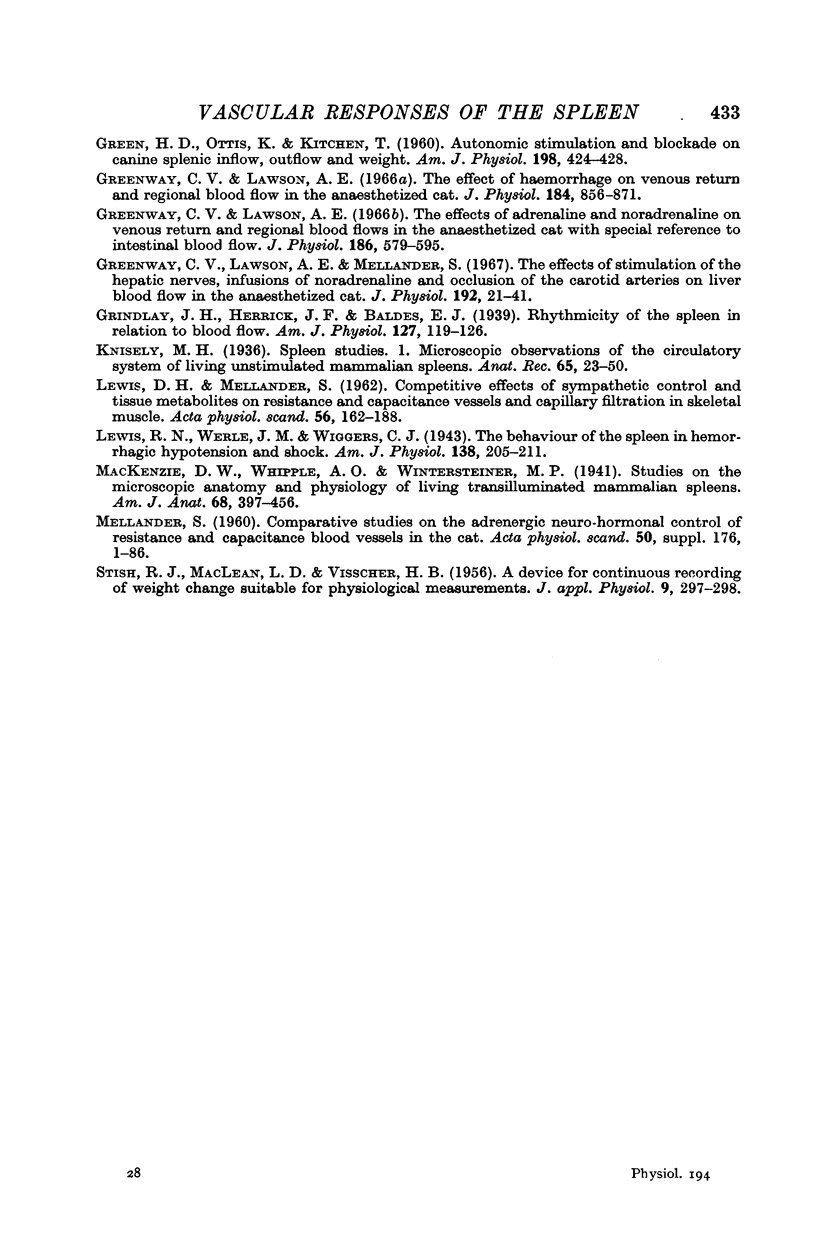
Selected References
These references are in PubMed. This may not be the complete list of references from this article.
- Barcroft J., Khanna L. C., Nisimaru Y. Rhythmical contraction of the spleen. J Physiol. 1932 Mar 7;74(3):294–298. doi: 10.1113/jphysiol.1932.sp002848. [DOI] [PMC free article] [PubMed] [Google Scholar]
- Barcroft J., Stephens J. G. Observations upon the size of the spleen. J Physiol. 1927 Oct 5;64(1):1–22. doi: 10.1113/jphysiol.1927.sp002414. [DOI] [PMC free article] [PubMed] [Google Scholar]
- CELANDER O. The range of control exercised by the sympathico-adrenal system; a quantitative study on blood vessels and other smooth muscle effectors in the cat. Acta Physiol Scand Suppl. 1954;32(116):1–132. [PubMed] [Google Scholar]
- Dresel P., Wallentin I. Effects of sympathetic vasoconstrictor fibres, noradrenaline and vasopressin on the intestinal vascular resistance during constant blood flow or blood pressure. Acta Physiol Scand. 1966 Apr;66(4):427–436. doi: 10.1111/j.1748-1716.1966.tb03220.x. [DOI] [PubMed] [Google Scholar]
- FOLKOW B. A critical study of some methods used in investigations on the blood circulation. Acta Physiol Scand. 1952;27(2-3):118–129. doi: 10.1111/j.1748-1716.1953.tb00929.x. [DOI] [PubMed] [Google Scholar]
- FOLKOW B., LEWIS D. H., LUNDGREN O., MELLANDER S., WALLENTIN I. THE EFFECT OF GRADED VASOCONSTRICTOR FIBRE STIMULATION ON THE INTESTINAL RESISTANCE AND CAPACITANCE VESSELS. Acta Physiol Scand. 1964 Aug;61:445–457. [PubMed] [Google Scholar]
- GREEN H. D., OTTIS K., KITCHEN T. Autonomic stimulation and blockade on canine splenic inflow, outflow and weight. Am J Physiol. 1960 Feb;198:424–428. doi: 10.1152/ajplegacy.1960.198.2.424. [DOI] [PubMed] [Google Scholar]
- Greenway C. V., Lawson A. E., Mellander S. The effects of stimulation of the hepatic nerves, infusions of noradrenaline and occlusion of the carotid arteries on liver blood flow in the anaesthetized cat. J Physiol. 1967 Sep;192(1):21–41. doi: 10.1113/jphysiol.1967.sp008285. [DOI] [PMC free article] [PubMed] [Google Scholar]
- Greenway C. V., Lawson A. E. The effect of haemorrhage on venous return and regional blood flow in the anaesthetized cat. J Physiol. 1966 Jun;184(4):856–871. doi: 10.1113/jphysiol.1966.sp007952. [DOI] [PMC free article] [PubMed] [Google Scholar]
- Greenway C. V., Lawson A. E. The effects of adrenaline and noradrenaline on venous return and regional blood flows in the anaesthetized cat with special reference to intestinal blood flow. J Physiol. 1966 Oct;186(3):579–595. doi: 10.1113/jphysiol.1966.sp008057. [DOI] [PMC free article] [PubMed] [Google Scholar]
- MACLEAN L. D., STISH R. J., VISSCHER M. B. A device for continuous recording of weight change suitable for physiological measurements. J Appl Physiol. 1956 Sep;9(2):297–298. doi: 10.1152/jappl.1956.9.2.297. [DOI] [PubMed] [Google Scholar]
- MELLANDER S. Comparative studies on the adrenergic neuro-hormonal control of resistance and capacitance blood vessels in the cat. Acta Physiol Scand Suppl. 1960;50(176):1–86. [PubMed] [Google Scholar]


